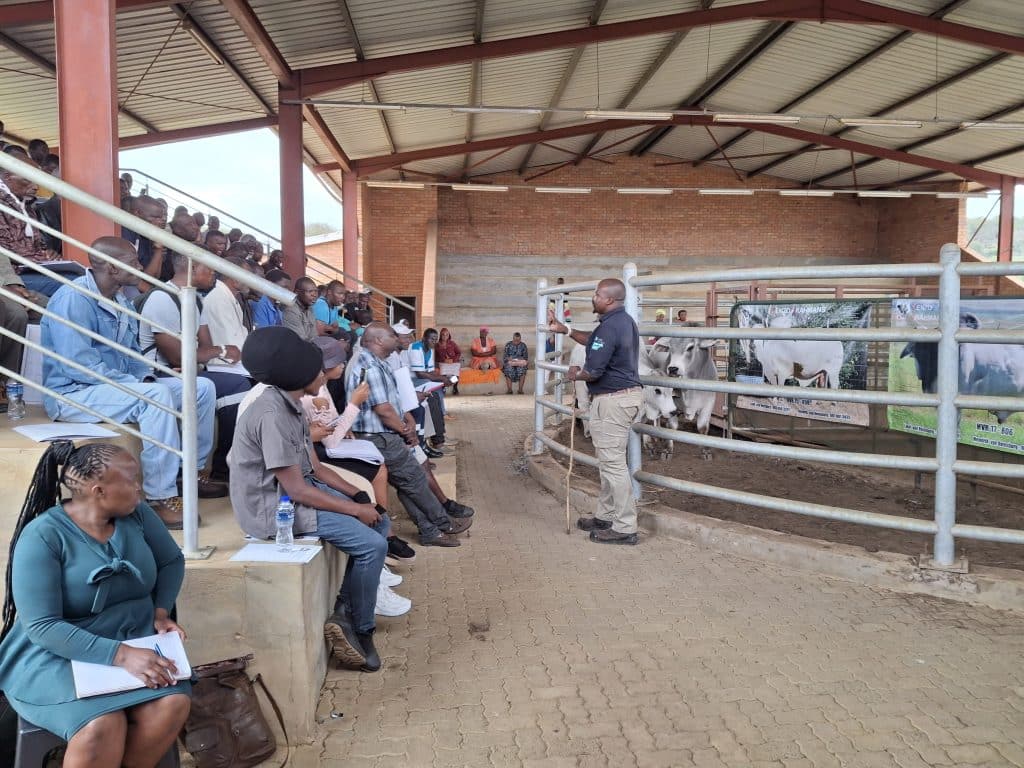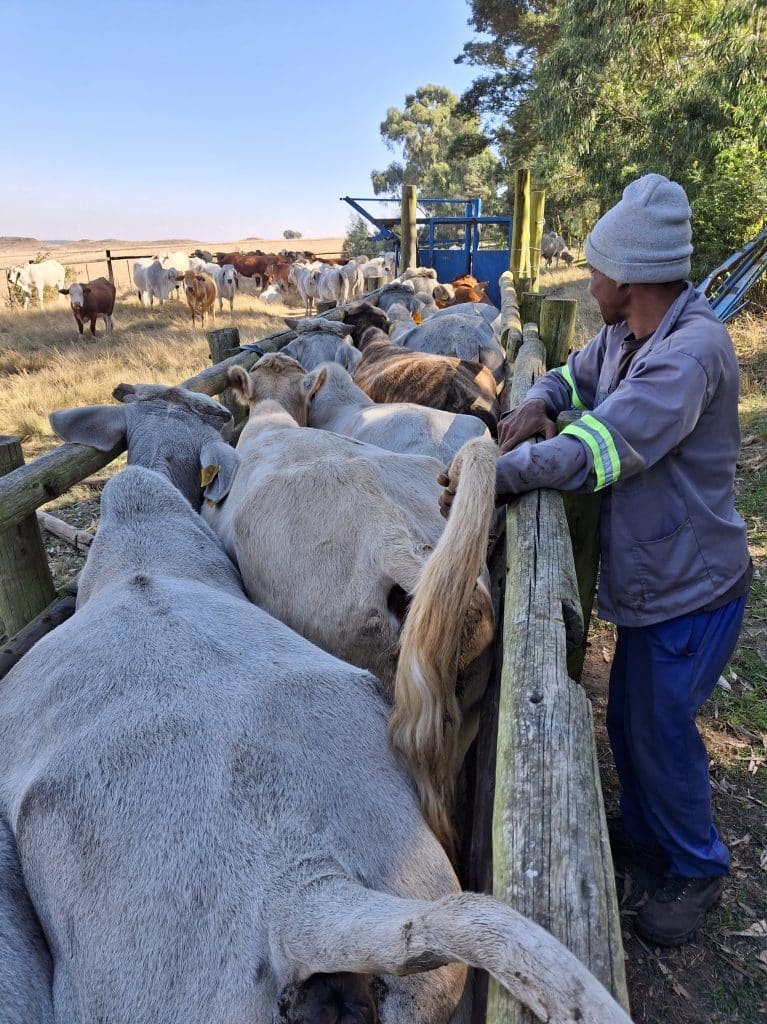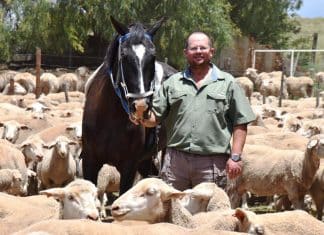Estimated reading time: 8 minutes
- Unlocking the full production potential of the livestock industry – that is the mission of Ndumiso Gule of Gule Agri Consulting based in Pietermaritzburg, KwaZulu-Natal.
- Gule believes there is huge untapped potential among especially black livestock owners in South Africa who are not part of the formal value chain. That potential can largely be unlocked by doing a few very simple things, the first of which is to improve conception rates.
- Before starting his own consultancy, Gule worked as herd manager on various farms. This, he says, gave him insight into the type of animal that thrives under different climate conditions.
- The main challenges communal farmers face are trichomoniasis and vibriosis in cattle.
- In a nutshell, Gule Agri Consulting wants to be the bridge between being a small-scale livestock producer and being a fully-fledged commercial producer.
Unlocking the full production potential of the livestock industry – that is the mission of Ndumiso Gule of Gule Agri Consulting based in Pietermaritzburg, KwaZulu-Natal. He believes there is huge untapped potential among especially black livestock owners in South Africa who are not part of the formal value chain. That potential can largely be unlocked by doing a few very simple things, the first of which is to improve conception rates.
“Top of the list is improved genetics,” he says, “which should lead to improved weaning weights for bull calves. More importantly, though, is that it should lead to more superior replacement heifers with particular emphasis on better reproduction.”
The focus should be on profit per hectare, which means a balanced approach or finding the sweet spot between good weaning weights in males and good replacement traits in females. “If you chase weaning weights, it implies high milk production by the mothers, which obviously comes at a feed cost. Should feeding not be optimal, those cows will struggle to conceive every year, which has a direct negative impact on profitability. The target is to achieve a pregnancy rate of above 95%.”

A high pregnancy rate, however, is just the start, says Ndumiso. Calving ease and calf survival are the next focus points. “It all starts with selecting the type of bull that will produce offspring that will perform in a specific environment. The emphasis in bull selection is on its female offspring. Therefore, we study a bull’s dam line carefully.
“It is especially telling to look at age at first calving. Many stud breeders breed their heifers at a young age, so their first calf can be born at 24 months. This is an indication of genetic fertility. If that cow reconceives a year later, it is confirmation of the type of dam line we are looking for.”
Using bulls from such lines does not necessarily imply that the new owner should also breed his/her heifers at such a young age, as environmental conditions may not be optimum. However, it does increase the genetic potential of the herd.
Read more about the basic principles of reproduction management here.
Practical approach to improvement
Before starting his own consultancy, Ndumiso worked as herd manager on various farms. This, he says, gave him insight into the type of animal that thrives under different climate conditions.
His typical clients can be divided into two broad categories. The first is producers with access to their own land, whether rented or owned. What is usually lacking is knowledge and experience of running cattle profitably. “Usually, these producers do not have a structured production system with set breeding seasons and fodder flow planning. Typically, they do not pay much attention to bull fertility or pregnancy rates.”

This category also has producers with sound knowledge who realise the value of good bulls. They often buy several stud bulls each year. Finding ways to improve efficiency in these herds involve, for example, buying fewer but more superior bulls and selecting the best performing cows in the herd to put with these bulls. “This will enable such a producer to select his/her own bulls to use on the lower half of the herd for a year before slaughtering them.”
The second category of clients is typically those who have cattle that they run in a communal set-up. “We use communal dip tanks as meeting points. We view the entire communal arrangement as one big farm cantered around a dip tank. We then cull all inferior bulls and use the funds to buy superior ones, and select all females of reasonable type and reproduction status to put to these bulls.”
With sexually transmitted diseases such as trichomoniasis an ever-present threat, says Ndumiso, it is vital to only put cows that regularly calve and raise their calves well to these bulls. The progeny born from these matings should then be a genetic improvement in terms of the average of the combined herd.
“The next step is to enter into agreements with feedlots to take the male offspring from these herds. In this way we not only improve the genetic value of herds, but we also facilitate a market for the offspring. The income generated is then divided among the owners.”
Navigating challenges
The main challenges communal farmers face are trichomoniasis and vibriosis in cattle. “It also is a given that not all users of communal grazing would agree to participate in our scheme. In such a case we divide the grazing so that those who don’t participate use one half and the participants the other. Usually, we can get the relevant municipality to sponsor fencing so that we can divide the grazing properly.
“During the breeding season we split the herds with the superior bulls running with the cows belonging to the participants. The herds are integrated again after the breeding season. The cows that calve first obviously calved from the better bulls. The difference in quality is evident. It often happens that those who did not want to participate initially, want to join after seeing the results.”
Stock theft usually goes down in these areas. “If you have a group of farmers running their herds together, they start to know their fellow farmers’ cattle. This increases security in that many more eyes are now watching the movement of the animals.”
A major challenge he faces, says Ndumiso, is perceptions, especially ‘bigger is better’. “I find that many farmers still believe that bigger cows are better because they wean heavier calves. It can be a long journey to convince them that moderation, combined with profit per hectare, is the holy grail. But once they understand this, it is easier to nudge them towards the optimum cow size for their environment. This conversation centres largely around nutrition and cow maintenance.”
Another challenge is convincing farmers to let go of unproductive cows. “I find that initially many clients just don’t see the need for a bull that costs R60 000. It is only over time that the superior offspring, which translates into more cash in their pockets, settles that argument for me. Other challenges are management issues such as set breeding seasons, proper fodder flow planning and management, and pregnancy testing, combined with culling unproductive cows.”
Reaching out across provinces
Gule Agri Consulting, says Ndumiso, has been doing work in KwaZulu-Natal, the Eastern Cape, Mpumalanga, Limpopo, and North West. The first factor he takes into consideration when selecting bulls for a client is the environment.
“The environment dictates what type of bull should be used. In hot and humid areas, the Bos indicus types function better, while in cold areas the Bos taurus type is better adapted. The second consideration is the projected breeding goals of the project. Obviously, fertility always comes first, but the best fertility in the wrong environment will be a waste of time. So, I try to match fertility with the right type of animal. After that, other factors such as milk and phenotype come into play.”
A powerful tool to change the minds of especially the older farmers is taking them on farm visits to well-known stock producers. Here they can experience first-hand what the effect is when the things he preaches are put into practice.
In a nutshell, Gule Agri Consulting wants to be the bridge between being a small-scale livestock producer and being a fully-fledged commercial producer. This, he stresses, also implies being a bridge between government and commercial producers. In this context, he has designed a skills and capacitation programme aimed at government extension officers and advisors, to play a role in ensuring that relevant knowledge is transferred effectively to empower livestock producers on their journey to commercial success. – Izak Hofmeyr, Stockfarm
For more information, contact Ndumiso Gule on 073 674 1559.







